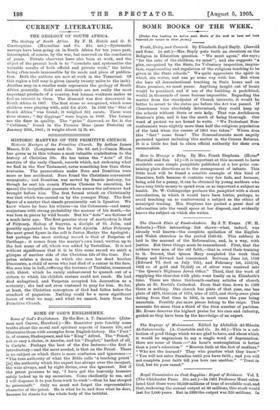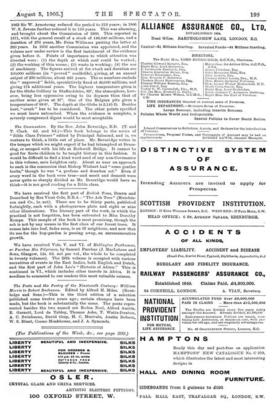Royal Commission on Coal Supplies: Digest of Evidence. Vol. I.
(The Chichester Press. 21s. net.)—In 1861 Professor Hunt calcu- lated that there were 59,109 millions of tons of available coal, and that, reckoning the annual output at 60 millions, this stock would last for 1,000 years. But in 1899 the output was 220 millions. In 1863 Sir W. Armstrong reduced the period to 213 years ; in 1865 W. S. Jevons further reduced it to 110 years. This was alarming, and brought about the Commission of 1866. This reported in 1871, with the general result of a stock of 146,840 millions, and a duration of 276 years, Mr. Price Williams putting the latter at 360 years. In 1902 another Commission was appointed, and the volume now under review is the first instalment of the evidence given before it. Points of importance to which attention was directed were : (1) the depth at which coal could be worked; (2) the working of thin seams ; (3) waste in working ; (4) the use of machinery. The figures arrived at for stock and duration are 100,000 millions (in "proved" coalfields), giving, at an annual output of 230 millions, about 435 years. The se numbers exclude the" unproved" fields, speculatively fixed at 40,000 millions, and giving 174 additional years. The highest temperature given is for the Glebe Colliery in Staffordshire, 890, the atmosphere, how- ever, being less oppressive owing to its dryness than that of another mine given at 87°. One of the Belgian pits gives a temperature of 896°. The depth at the Glebe is 2,145 ft. Besides heat, "crush" has to be considered. The other points specified we must leave untouched. When the evidence is complete, a severely compressed digest would be most acceptable.







































 Previous page
Previous page